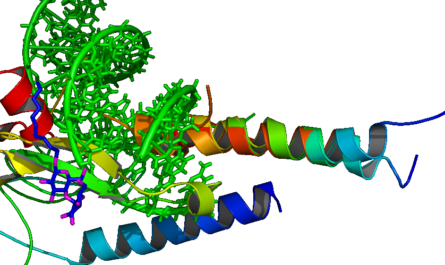A recent study has revealed that greenspaces, which include the vegetation in a neighborhood’s parks, yards, and public spaces, have a positive impact on a key genetic marker associated with stress. However, the study also indicates that the positive effects of greenspace cannot fully compensate for other environmental challenges, such as air pollution.
The study focused on telomeres, which are sections of repetitive DNA found at the ends of chromosomes. Telomeres play a crucial role in protecting the chromosomes from damage. However, with each cell division, telomeres become slightly shorter until they reach a point where the cell can no longer divide successfully, leading to cellular death.
Scott Ogletree, the corresponding author of the study and a former postdoctoral researcher at North Carolina State University’s Center for Geospatial Analytics, explains that telomeres are important markers of biological age and reflect the wear and tear on our cells. Various factors, including stress, can influence the rate at which telomeres shorten. Ogletree is currently a lecturer at the University of Edinburgh.
The study aimed to quantify the beneficial impacts of greenspace at the cellular level and determine to what extent greenspace can counterbalance environmental harms. Aaron Hipp, a professor of parks, recreation, and tourism management at NC State and co-author of the study, explains that previous research has highlighted the benefits of greenspace as well as the adverse health effects associated with pollution, racial segregation in housing, and other environmental and social challenges. This study seeks to understand the specific positive impacts of greenspace on the cellular level and its ability to mitigate environmental harm.
To conduct the study, researchers utilized data from the CDC’s National Health and Nutrition Examination Survey (NHANES) from 1999 to 2002. NHANES is a nationally representative study that evaluates the health of the U.S. population by conducting interviews and physical examinations.
The researchers analyzed data from 7,827 individuals, which provided information on demographic data, telomere length, and residential location. The team examined the amount of greenspace in each person’s neighborhood and its correlation with telomere length.
The study also considered potential confounding variables such as lifestyle, health history, substance use, and environmental factors that could impact telomere length, including air quality and redlining maps that track historically segregated neighborhoods.
The findings revealed a positive correlation between the amount of greenspace in a neighborhood and the length of telomeres. Aaron Hipp states, “We found that the more greenspace people had in their neighborhoods, the longer their telomeres were,” regardless of variables such as race, economic status, or lifestyle choices.
However, when considering other neighborhood characteristics like air pollution, segregation, and deprivation, the positive effects of greenspace diminished. Deprivation encompassed data on income, education, employment status, and housing conditions within a neighborhood. In essence, although greenspace contributes to the protection of telomere length, it is negated by the detrimental impact of other factors.
While greenspace holds immense value, it alone cannot overcome systemic racism, economic segregation, and environmental injustices, emphasizes Hipp. He emphasizes that while creating greenspace in a community is important, it is equally crucial, if not more so, to address environmental harms, particularly those linked to systemic racism.
The study, published in the journal Science of The Total Environment, highlights the importance of understanding the complex interplay between greenspace, environmental challenges, and their impact on cellular health. By acknowledging these factors, communities can work towards creating healthier and more equitable living environments.
*Note:
1. Source: Coherent Market Insights, Public sources, Desk research
2. We have leveraged AI tools to mine information and compile it




